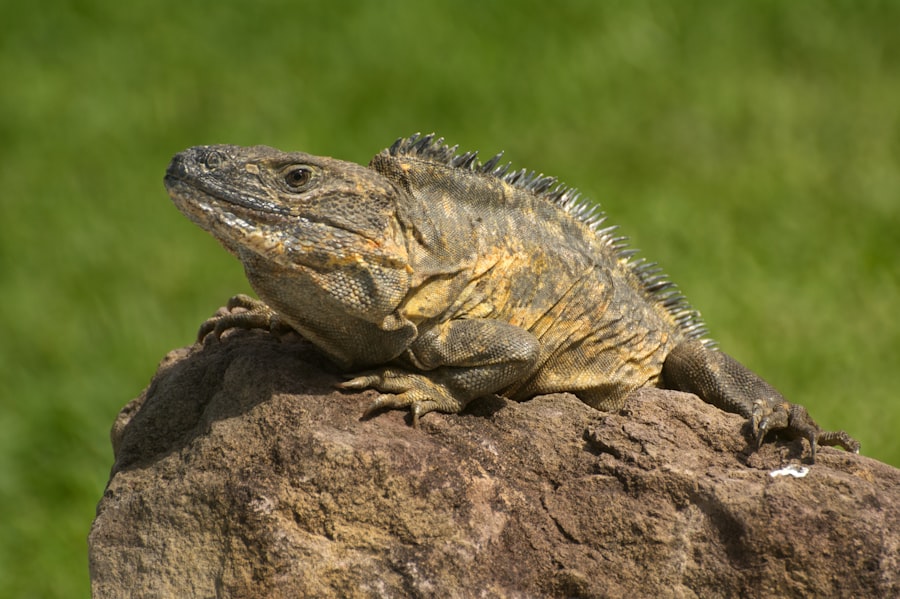Underwater volcanic eruptions are among the most powerful and enigmatic natural phenomena on our planet. These eruptions occur beneath the ocean’s surface, where magma from the Earth’s mantle forces its way through the crust, resulting in explosive activity that can reshape entire underwater landscapes. The sheer scale of these eruptions can be staggering, often releasing vast amounts of gas, ash, and molten rock into the surrounding water.
As you delve into the depths of this subject, you will discover how these eruptions not only alter the physical environment but also have far-reaching implications for marine ecosystems and coastal communities. The underwater realm is a world of mystery, where the forces of nature operate largely unseen. When a volcanic eruption occurs beneath the waves, it can create new islands, alter ocean currents, and even influence global climate patterns.
The energy released during these events can be immense, leading to tsunamis and other secondary disasters that pose significant risks to nearby landmasses. Understanding the mechanics of underwater volcanic eruptions is crucial for predicting their impacts and preparing for potential consequences, especially in a world where climate change is increasingly affecting geological activity.
Key Takeaways
- Underwater volcanic eruptions can have significant impacts on marine life and coastal communities
- The discovery of Godzilla’s awakening has raised concerns about the potential threat to marine life and ecosystems
- Scientists and government officials are working together to assess the situation and develop response strategies
- The potential threat to coastal communities from Godzilla’s existence is a cause for concern and requires careful monitoring
- Understanding the historical context of Godzilla’s existence can provide valuable insights into managing the situation
Discovery of Godzilla’s Awakening
The recent discovery of Godzilla’s awakening has sent shockwaves through both scientific communities and popular culture. This legendary creature, long thought to be a mere myth, has been linked to underwater volcanic activity that has intensified in recent years. Reports from marine biologists and geologists have indicated unusual seismic activity in the Pacific Ocean, leading to speculation about the re-emergence of this iconic monster.
As you explore this phenomenon, you will find that the intersection of folklore and science has sparked a renewed interest in understanding the implications of such an awakening. The awakening of Godzilla is not just a tale spun from imagination; it represents a convergence of geological events and cultural narratives. Scientists have documented increased volcanic activity in regions historically associated with Godzilla sightings, raising questions about the relationship between these eruptions and the creature’s legendary status.
As researchers investigate this connection, they are uncovering fascinating insights into how ancient myths can inform our understanding of modern geological processes. The excitement surrounding Godzilla’s awakening serves as a reminder of how deeply intertwined human culture is with the natural world.
Impact on Marine Life and Ecosystem

The impact of underwater volcanic eruptions on marine life and ecosystems can be profound and multifaceted. When magma erupts beneath the ocean, it releases not only heat but also a variety of chemicals that can alter the surrounding water’s composition. This sudden influx of nutrients can lead to blooms of phytoplankton, which may initially benefit some marine species but can also result in harmful algal blooms that disrupt local ecosystems.
As you consider these dynamics, it becomes clear that the consequences of such eruptions are not straightforward; they can create both opportunities and challenges for marine organisms. Moreover, the physical changes brought about by underwater eruptions can reshape habitats critical to various marine species. Coral reefs, for instance, may be damaged or destroyed by volcanic activity, leading to a decline in biodiversity.
Fish populations that rely on these reefs for shelter and food may also suffer as their habitats are altered or lost. The cascading effects on the food web can be significant, impacting everything from small plankton to larger predators. Understanding these interactions is essential for developing strategies to protect marine ecosystems in the face of increasing volcanic activity.
Response from Scientists and Government
| Metrics | Response from Scientists and Government |
|---|---|
| Research Funding | Increased funding for scientific research and development |
| Policy Changes | Implementation of new policies based on scientific recommendations |
| Public Health Measures | Issuance of guidelines and regulations to protect public health |
| Collaboration | Collaboration between scientists and government agencies for data sharing and decision-making |
In light of Godzilla’s awakening and the associated underwater volcanic activity, scientists and government agencies have mobilized to assess the situation and formulate responses. Researchers are deploying advanced monitoring systems to track seismic activity and changes in ocean chemistry, aiming to predict potential eruptions and their impacts on marine life. This proactive approach is crucial for mitigating risks associated with underwater volcanic eruptions, especially as they relate to the legendary creature’s re-emergence.
Government agencies are also taking steps to prepare for potential threats posed by Godzilla’s awakening. Emergency response plans are being developed in collaboration with scientists to ensure that coastal communities are equipped to handle any fallout from volcanic activity or related disasters. Public awareness campaigns are being launched to educate residents about the risks associated with underwater eruptions and how they can stay safe.
By fostering collaboration between scientists and policymakers, there is hope for a more coordinated response to this unprecedented situation.
Potential Threat to Coastal Communities
The potential threat posed by Godzilla’s awakening extends beyond marine ecosystems; it also raises significant concerns for coastal communities situated near active underwater volcanoes. The possibility of tsunamis generated by volcanic eruptions is a primary concern for residents living along coastlines. These massive waves can devastate infrastructure, displace populations, and lead to loss of life if adequate warning systems are not in place.
As you consider these risks, it becomes evident that preparedness is key to safeguarding communities from such natural disasters. In addition to tsunamis, coastal communities may face other challenges related to underwater volcanic activity. Changes in water temperature and chemistry can affect local fisheries, which many communities rely on for their livelihoods.
The economic implications of disrupted fishing industries can be severe, leading to food insecurity and loss of income for families dependent on these resources. By understanding the potential threats posed by Godzilla’s awakening, communities can work together to develop resilience strategies that prioritize safety and sustainability.
Historical Context of Godzilla’s Existence

To fully appreciate the significance of Godzilla’s awakening, it is essential to explore the historical context surrounding this iconic creature. Emerging from Japanese cinema in the 1950s, Godzilla was initially conceived as a metaphor for nuclear destruction following World War
The connection between Godzilla and underwater volcanic activity is not merely coincidental; it reflects humanity’s ongoing relationship with geological forces. Throughout history, cultures around the world have created myths and legends to explain natural phenomena they could not understand. Godzilla serves as a modern manifestation of these ancient narratives, reminding us that our understanding of nature is still evolving.
By examining this historical context, you can gain insight into how folklore shapes our perceptions of environmental issues today.
Containment and Management Strategies
As scientists continue to study Godzilla’s awakening and its implications for underwater volcanic activity, containment and management strategies are becoming increasingly important. One approach involves enhancing monitoring systems to provide real-time data on seismic activity and potential eruptions. By utilizing advanced technology such as satellite imagery and underwater drones, researchers can gain valuable insights into volcanic behavior and its potential impacts on marine ecosystems.
In addition to monitoring efforts, collaboration between scientists, government agencies, and local communities is essential for developing effective management strategies. Engaging stakeholders in discussions about risk assessment and preparedness can foster a sense of shared responsibility for protecting both human lives and marine environments. By prioritizing education and awareness initiatives, communities can empower individuals to take proactive measures in response to potential threats posed by underwater volcanic activity.
Future Implications for Underwater Volcanic Activity
Looking ahead, the implications of underwater volcanic activity—especially in light of Godzilla’s awakening—are both intriguing and concerning. As climate change continues to influence geological processes, we may witness an increase in volcanic eruptions worldwide. This trend could have cascading effects on marine ecosystems, coastal communities, and even global climate patterns.
As you contemplate these future scenarios, it becomes clear that understanding the dynamics of underwater volcanism will be crucial for navigating an uncertain future. Moreover, the cultural significance of Godzilla as a symbol of nature’s power will likely continue to resonate as we confront environmental challenges. The intersection of science and mythology offers valuable lessons about our relationship with the natural world and our responsibility to protect it.
By embracing both scientific inquiry and cultural narratives, we can foster a deeper understanding of underwater volcanic activity and its implications for our planet’s future. In conclusion, the awakening of Godzilla serves as a powerful reminder of the intricate connections between geological phenomena and human culture. As we navigate the complexities of underwater volcanic eruptions, it is essential to remain vigilant in our efforts to understand their impacts on marine life, coastal communities, and our shared environment.
Through collaboration between scientists, policymakers, and local residents, we can work towards a future that prioritizes safety, sustainability, and respect for the forces that shape our world.
